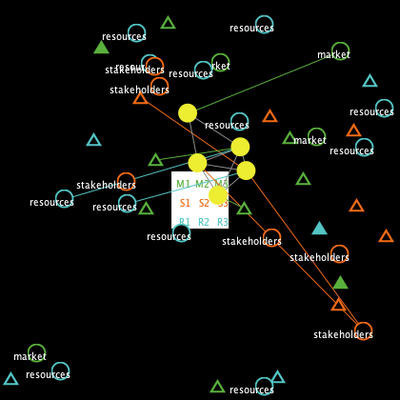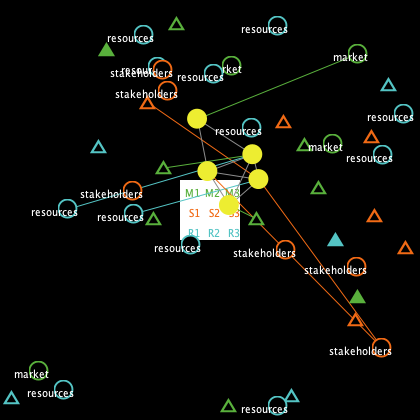The S-uFUNK Model (2.1.0)
This version 2.1.0 of the uFunk model is about setting a business strategy (the S in the name) for an organization. A team of managers (or executives) meet and discuss various options on the strategy for the firm. There are three aspects that they have to agree on to set the strategic positioning of the organization.
The discussion is on market, stakeholders, and resources. The team (it could be a business strategy task force) considers various aspects of these three elements. The resources they use to develop the discussion can come from a traditional approach to strategy or from non-traditional means (e.g., so-called serious play, creativity and imagination techniques).
The S-uFunk 2.1.0 Model wants to understand to which extent cognitive means triggered by traditional and non-traditional resources affect the making of the strategy process.

Release Notes
This model builds conceptually on uFunk 1.2.0 and some of the components in the interface remain the same. At the same time, it also develops a completely new set of functions that are coded separately and independently from the previous model. The ‘S’ means that new code has been developed to address the new enquiry.
Associated Publications
Secchi, D. (2023b). The relevance of social dynamics and dispositions on non-traditional aids to the strategic process. In R. Gustafson (Ed.), Cognitive Aids in Strategy, New Horizons in Managerial and Organizational Cognition (pp. in press). Emerald Publishing Limited.
The S-uFUNK Model 2.1.0
Submitted by
Davide Secchi
Published Mar 17, 2023
Last modified Mar 17, 2023
This version 2.1.0 of the uFunk model is about setting a business strategy (the S in the name) for an organization. A team of managers (or executives) meet and discuss various options on the strategy for the firm. There are three aspects that they have to agree on to set the strategic positioning of the organization.
The discussion is on market, stakeholders, and resources. The team (it could be a business strategy task force) considers various aspects of these three elements. The resources they use to develop the discussion can come from a traditional approach to strategy or from non-traditional means (e.g., so-called serious play, creativity and imagination techniques).
The S-uFunk 2.1.0 Model wants to understand to which extent cognitive means triggered by traditional and non-traditional resources affect the making of the strategy process.
Release Notes
This model builds conceptually on uFunk 1.2.0 and some of the components in the interface remain the same. At the same time, it also develops a completely new set of functions that are coded separately and independently from the previous model. The ‘S’ means that new code has been developed to address the new enquiry.

